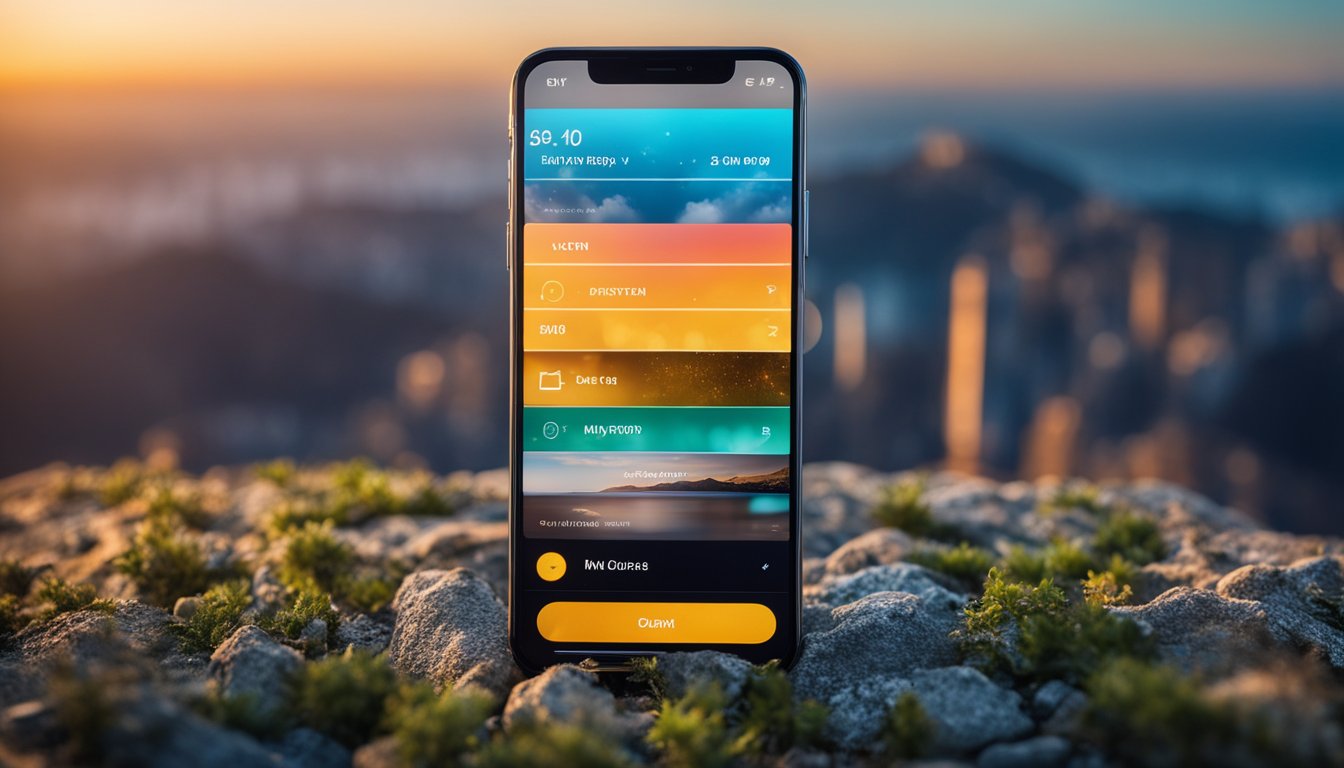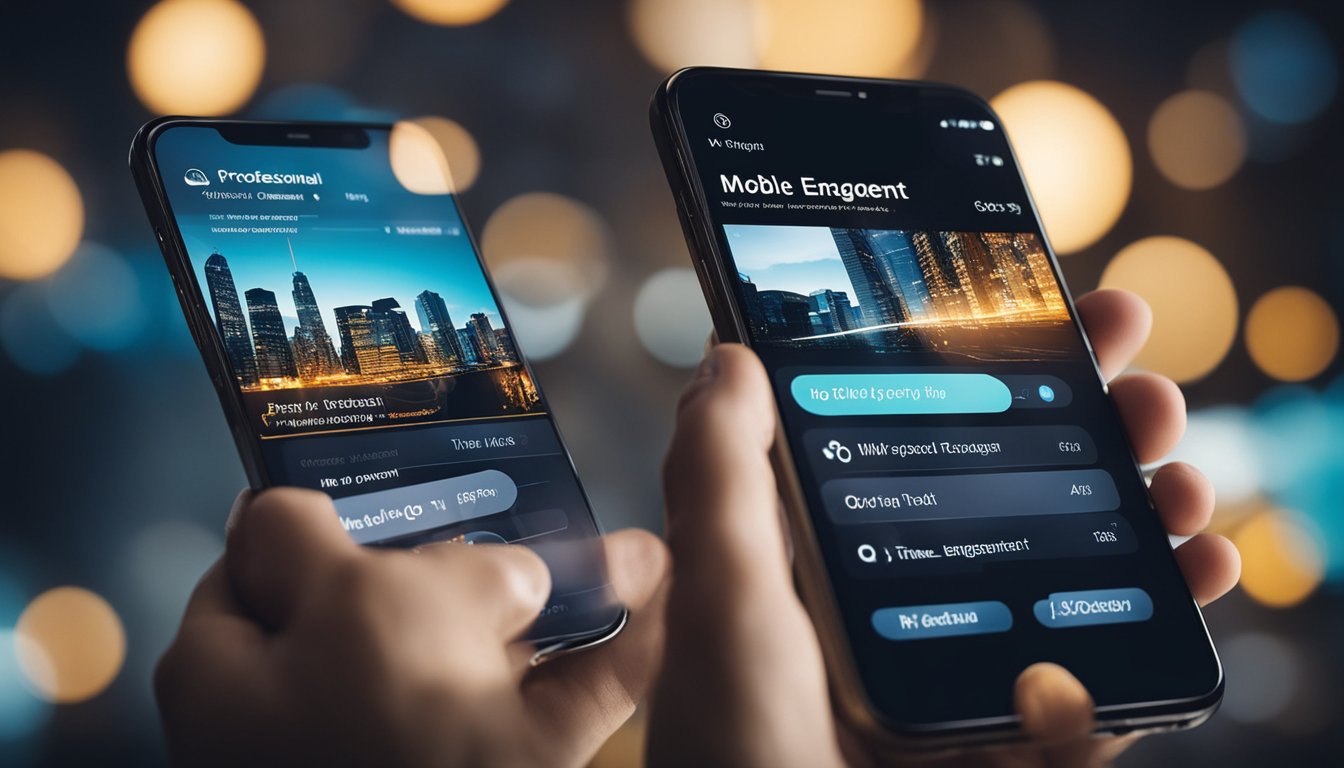Improve User Engagement Tips to Boost Your Mobile Apps Success
As a mobile app developer, improving user engagement is a crucial aspect of your app's success. User engagement refers to the level of interaction and satisfaction that users have with your app. It is essential to ensure that users find your app engaging and valuable to keep them coming back and recommending it to others. In this article, I will discuss strategies to improve user engagement in your mobile app, measure and analyze engagement metrics, and maintain user engagement and retention.

Understanding user engagement and its importance is the first step in improving it. User engagement is a key metric that measures how users interact with your app and how satisfied they are with the overall experience. A high level of user engagement is an indicator of a successful app that meets users' needs and provides value. On the other hand, low user engagement can lead to app abandonment and negative reviews, which can harm your app's reputation and hinder its growth.
To improve user engagement in your mobile app, you need to implement strategies that address the most common reasons for low engagement. These strategies can include optimizing the onboarding process, enhancing the user interface, providing valuable and relevant content, and incorporating social features. By analyzing engagement metrics, you can measure the effectiveness of these strategies and identify areas for improvement. Maintaining user engagement and retention requires ongoing efforts, such as providing regular updates, addressing user feedback, and offering incentives and rewards.
Key Takeaways
- User engagement is a crucial metric that measures how users interact with your mobile app and how satisfied they are with the overall experience.
- Strategies to improve user engagement include optimizing the onboarding process, enhancing the user interface, providing valuable content, and incorporating social features.
- Measuring and analyzing engagement metrics is essential to identify areas for improvement, while maintaining user engagement and retention requires ongoing efforts such as regular updates and addressing user feedback.
Understanding User Engagement and Its Importance

As a mobile app developer, I understand the importance of user engagement for the success of my app. User engagement refers to the level of interaction, involvement, and commitment that users have with a mobile application. It indicates how users interact with the app, how frequently they use it, and the depth of their involvement.
One of the key metrics to measure user engagement is the number of active users. Active users are those who actually use your app. A healthy app will have a higher number of active users than new users, indicating stickiness and an effective engagement strategy. By tracking the number of active users, I can determine how well my app is retaining users and keeping them engaged.
Another important metric is the retention rate, which is the percentage of users who continue to use the app after a certain period of time. High retention rates indicate that users find the app valuable and engaging, while low retention rates suggest that users are not finding the app useful or interesting enough to keep using it.
Churn is the opposite of retention and refers to the percentage of users who stop using the app over a given period of time. High churn rates indicate that users are not finding the app valuable or engaging enough to continue using it.
To improve user engagement, it's important to track engagement metrics such as app engagement metrics, user retention, churn rate, app retention, and engagement rates. By monitoring these metrics, I can identify areas where users are dropping off or losing interest and take steps to improve the app's engagement and retention rates.
Daily active users (DAU) and monthly active users (MAU) are also important engagement metrics to track. DAU measures the number of users who use the app on a daily basis, while MAU measures the number of users who use the app on a monthly basis. By tracking these metrics, I can get a better understanding of how often users are using the app and how engaged they are with it.
In summary, user engagement is crucial for the success of a mobile app. By tracking and analyzing engagement metrics, I can identify areas for improvement and take steps to improve the app's engagement and retention rates.
Strategies to Improve User Engagement

As a mobile app developer, I understand the importance of keeping users engaged with my app. Here are some effective strategies that I have found to improve user engagement:
Optimizing Onboarding Process
A seamless onboarding process can help users understand your app's functionality and benefits, leading to increased engagement. Make sure your onboarding process is clear and concise, with interactive tutorials and helpful feedback. Consider asking for user preferences and information during the onboarding process, which can help you tailor the app experience to their needs.
Leveraging Push Notifications and In-App Messages
Push notifications and in-app messages can be powerful tools for driving user engagement. Use them to provide timely and relevant information, such as personalized campaigns or reminders of upcoming events. However, be mindful of the timing and frequency of your messages, as too many can be overwhelming and lead to user churn.
Implementing Gamification
Gamification can be a fun and effective way to keep users engaged with your app. Consider adding features such as goals, points, badges, levels, and progress tracking, which can provide users with a sense of accomplishment and motivate them to continue using the app. Additionally, incentives such as discounts or exclusive content can further incentivize users to engage with the app.
Personalizing User Experience
Personalization can help create a more engaging and satisfying user experience. Consider segmenting your audience and tailoring content and features to specific groups. A/B testing can help you determine which personalized campaigns and calls to action are most effective. Additionally, allowing users to customize their account creation and preferences can help them feel more invested in the app.
By implementing these strategies, I have seen improvements in session length and overall customer experience. It's important to remember that user engagement is an ongoing process, and it's essential to continually monitor and optimize performance to ensure continued success.
Measuring and Analyzing Engagement Metrics

As a mobile app developer, it's important to measure and analyze engagement metrics to understand how users are interacting with your app. By tracking key metrics, you can gain valuable insights into user behavior and make informed decisions on how to improve your app.
One of the most important engagement metrics is retention rate, which measures the percentage of users who return to your app after their initial download. A high retention rate indicates that users find your app valuable and are more likely to continue using it. To improve retention rates, consider offering personalized experiences, sending push notifications, and releasing regular updates.
Conversion rate is another important metric that measures the percentage of users who complete a desired action, such as making a purchase or signing up for a subscription. To improve conversion rates, make sure your app's design is intuitive and easy to navigate, and offer incentives for users to complete the desired action.
Churn rate is the percentage of users who stop using your app over a given period of time. A high churn rate can indicate that users are not finding your app valuable or are experiencing technical issues. To reduce churn rate, consider offering customer support and addressing technical issues promptly.
Session interval measures the amount of time between user sessions. A shorter session interval indicates that users are more engaged with your app and are more likely to return frequently. To encourage shorter session intervals, consider offering personalized experiences and sending push notifications.
Ratings and reviews are also important engagement metrics that can provide valuable feedback on your app's user experience. Encourage users to leave ratings and reviews by offering incentives or making it easy to do so within the app.
App stickiness is a metric that measures how frequently users return to your app over a given period of time. A high app stickiness indicates that users find your app valuable and are more likely to continue using it. To improve app stickiness, consider offering personalized experiences, sending push notifications, and releasing regular updates.
Overall, analyzing engagement metrics is crucial for improving your app's user experience and increasing user engagement. By tracking key metrics and making informed decisions based on the data, you can create a more successful app that users love to use.
Maintaining User Engagement and Retention

As a mobile app developer, I understand the importance of maintaining user engagement and retention. It is crucial to keep users interested in the app and coming back for more. Here are some strategies that have worked for me:
Keeping Content Relevant and Engaging
One of the most important factors in keeping users engaged is providing relevant and engaging content. This includes everything from the app's branding to the content within the app. It is important to understand the target audience and tailor the content to their interests and pain points. Visuals, such as icons, colors, and images, should be carefully chosen to align with the brand and appeal to the target audience. Navigation should be intuitive and easy to use, and fonts and audio should be consistent throughout the app.
Rewarding User Loyalty
Rewarding user loyalty is another effective strategy for maintaining user engagement and retention. This can include offering incentives for loyal users, such as discounts, special offers, or exclusive content. Deep linking and social media integration can also be used to reward users for sharing the app with their friends and family. It is important to make sure that rewards are relevant and valuable to the user.
Ensuring Seamless User Experience
Finally, ensuring a seamless user experience is key to maintaining user engagement and retention. This includes everything from the app's value proposition to the user's privacy and permission settings. The app should provide a clear and concise value proposition that is easy to understand. Users should be able to easily navigate the app and find what they are looking for. Session duration and user feedback should be monitored to ensure that the app is meeting the needs of its users. Ratings and customer retention rates should also be monitored to identify areas for improvement.
In conclusion, maintaining user engagement and retention is crucial for the success of any mobile app. By keeping content relevant and engaging, rewarding user loyalty, and ensuring a seamless user experience, developers can keep users coming back for more.
Frequently Asked Questions

What are some effective ways to increase user retention for a mobile app?
One effective way to increase user retention is to provide a seamless and personalized user experience. This can be achieved by regularly updating the app with new features, fixing bugs, and addressing user feedback. Additionally, providing incentives such as rewards, discounts, or exclusive content to loyal users can help increase retention.
How can I improve the performance benchmarks for my mobile app?
To improve the performance benchmarks for your mobile app, you can optimize the app's code, reduce its size, and improve its loading times. Additionally, you can use analytics tools to identify and fix any performance issues that may be affecting your app's user experience.
What are some proven strategies to increase monthly active users (MAU) for my mobile app?
Some proven strategies to increase monthly active users include optimizing your app's visibility in the app store, leveraging social media and other marketing channels to promote your app, and providing a referral program to incentivize users to invite their friends to use the app.
What are some ways to increase daily active users (DAU) for a mobile app?
To increase daily active users, you can provide daily incentives such as rewards, discounts, or exclusive content that are only available for a limited time. Additionally, you can use push notifications to remind users to engage with the app and offer personalized recommendations based on their usage history.
What are some key metrics to track for app engagement?
Some key metrics to track for app engagement include retention rate, daily active users, monthly active users, session length, and churn rate. These metrics can help you identify areas for improvement and track the effectiveness of your engagement strategies.
What are some effective ways to motivate users to engage with my mobile app?
Providing personalized recommendations based on the user's usage history, using gamification techniques such as leaderboards and rewards, and offering exclusive content or discounts can all be effective ways to motivate users to engage with your mobile app. Additionally, regularly updating the app with new features and fixing bugs can help keep users engaged and satisfied with the app.

We are committed to delivering a new level of automation that will help organizations save time, money, and staffing resources.
 WRITE FOR US!
WRITE FOR US!
